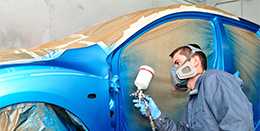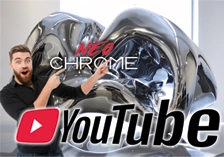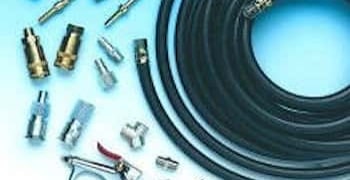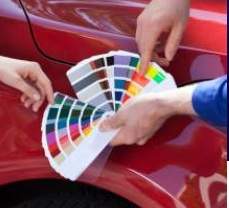 What are the painter's devices and accessories ?
What are the painter's devices and accessories ?
This article is particularly aimed at all those who have the project to settle down and where to retrain as a spray painter.
Regarding the methods of applying a paint (spray, hydro- dipping..), the activity can be varied and ranges from painting on automobile bodywork, passing through the painting and personalization of motorcycles, and more recently, this great current trend, which is the painting and personalization of bicycles.
The painter needs for his work a certain number of equipment and installations, both to prepare his pieces, to spray the paints, to mix them and of course to suck up the sprays of paint that form during application.
As for spraying paint, one or more guns are necessary : you can choose to have a single gun when you start and this gun can be used for just about every product, from primaries through the paints and up to the varnish. You will quickly realize that it is practical and useful to have three guns to separate each group of products and to pay particular attention to the cleanliness of the gun which is used for the clearcoat.
On the contrary, for the guns of primer, you will need a slightly larger nozzle and you can save yourself tedious and meticulous cleaning.
The painter's equipment and installations
If you had to choose a nozzle size for your gun that allows you to spray all products, then you would have to choose a 1.4 mm nozzle : this allows you to spray and paint varnishes and varnishes perfectly. paintings. In truth, you can paint any product, even a thick filling primer, with a mini 1 mm nozzle gun, because with sufficient dilution, you can obtain the desired viscosity.
Many painters and in particular the painters who specialize in the decoration of bicycles, want to paint with mini guns? These small guns have cups of just 200 ml and they are smaller in size than conventional guns.
Their nozzle is generally 0.8 or 1.0 mm and it does not pose a problem for the use of paints and clearcoats : in general, the use of a mini spray gun offers a unique advantage, which is that of being more manageable and going almost everywhere, that is to say inside the frame of a bicycle or in places where there is not much space...
However, it is possible to paint absolutely everything with a big gun, while it is not possible to paint everything with a small gun.
For painters who regularly do masking work with adhesives, especially paintings with stencils, on limited areas of parts such as bicycle frames or helmets, then it is very useful to also have an airbrush in your toolkit.
For the choice of the airbrush, it will be more necessary to take an airbrush with a large cup rather than an airbrush to make precision drawing.
All these tools are of course accompanied by a series of pneumatic fittings and filter, as well as the hose. It is very important to have a good filtering of its air in order to obtain a quality of perfect cleanliness of the air which will be cleaned at the same time from humidity, grease from the compressor and other impurities or dust.
 The paint booth and the ventilation systems
The paint booth and the ventilation systems
As for the facilities, the painter needs a cutting and drawing space with a computer station for the creation of logos. Indispensable, the paint booth and the ventilation systems are of course the main investment in the room and the installations of the spray painter.
The paint booth is a space where paints are applied and which has a suction surface, or rather an extraction surface, which is enabled by motors or extractors.
The extraction is either on the wall or "on the floor".
In general, for painting bicycles and motorcycles, a half cabin is sufficient: it is not wise to equip yourself with a large cabin that consumes too much energy.
For those who do not want to invest thousands or tens of thousands of euros in a real professional booth, there is of course the option of making your own booth.
In In this case, here are some tips: first of all, you have to install an air inlet and an air outlet. The air inlet must be fitted with a dust filter. It is possible to install one or two motors, that is to say, install one at the exit naturally, but also one at the entrance to push the air.
The hydro-dipping transfer tank
When planning to do occasional or full-time hydrographic transfer applications, the hydro-dipping transfer pan can be installed outside the booth, as the activator spray only lasts a few seconds and the quantity of sprayed products is very low.
Spaces and work surfaces, if possible equipped with wall suction or a vacuum cleaner, will make it possible to carry out the various sanding operations.
Of course, when hydrographic printing is done, there is painting phases, particularly at the level of primer and clearcoat. This is done in the cabin.
It is necessary to ensure that you have sufficient power at the level of the motors in order to allow efficient extraction of paint fumes because if they are not well inspired, they will fall on the freshly painted work and create a disastrous result.
Lighting is very important, especially in the paint booth, in order to clearly see the thickness and quality of the coats of paint being applied. You need white neon lights.
The paint lab
Solvents are dangerous products that must be stored safely. Similarly, mixing can give off harmful or flammable fumes and these mixtures must be made with the utmost care and precision, that's what the paint lab is for. The storage area and the paint mixture preparation area are important areas: it must be sealed with permanent and continuous air suction, so as not to create too high concentrations of solvents in the room atmosphere. These vapors or fumes are both dangerous for the worker and also, they can cause risks of explosion.
Other methods of applying paint
Supplying compressed air for paint application
Spraying with an airbrush, spray gun, aerosol and chrome plating







